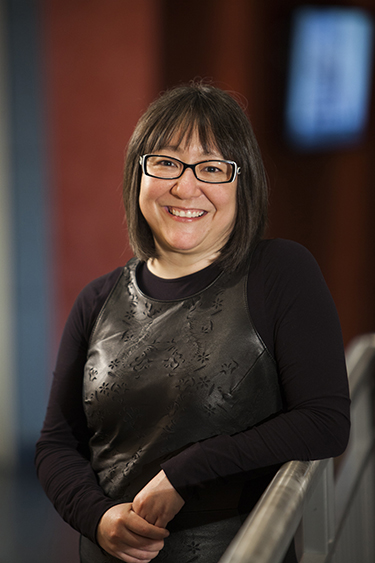|
Subscribe / Renew |
|
|
Contact Us |
|
| ► Subscribe to our Free Weekly Newsletter | |
| home | Welcome, sign in or click here to subscribe. | login |
Architecture & Engineering
| |
June 26, 2015
Expert has some ideas to improve local retail scene
Journal Staff Reporter

Joan Insel started her career as an architect doing historic preservation projects, but over time realized that wasn't her passion. It was studying people to learn why they read certain things, listen to this or that music or gravitate to particular spaces, she said in a recent interview with the DJC.
Global architecture firm Callison hired Insel in 1989 as an architect, but she transitioned into graphic design. That led to work in brand strategy and figuring out what consumers want.
Insel is now a director and retail design strategist at Callison in Seattle. She heads a team that collaborates with architects, designers and graphic designers to create the right experience for customers in stores.
Insel has led retail design strategy for Sperry Top-Sider and Vera Bradley and design strategy for SpringHill Suites by Marriott. Industry publication design:retail named her one of the 10 Retail Design Influencers of the Year for 2014.
The 26-year industry veteran said Seattle's retail core could use some improving.
The Pike-Pine corridor needs to be more human-scale, she said. “Now we have a lot of large buildings that aren't pedestrian-facing” — that don't have a storefront on the corridor, she said.
Storefronts should have less aluminum and glass and more wood and other materials that feel real and natural, she said. Signage should be varied and provide a local feel “so everything doesn't look like we just ordered it out of a standards catalog.”
Parking ought to be easy and accessible and restaurants should open to the sidewalk — and there ought to be more of them downtown.
With the explosion of food and beverage outlets in Seattle, Insel said, “We're getting very little of it in the downtown core.”
While downtown is “not a restaurant desert by any means,” she said, it needs more social, local joints like Tiffin, an Asian fusion to-go place in the former box office space of The Triple Door.
The core could also use more boutique retail, like what's offered in Pioneer Square and Capitol Hill.
Insel said building owners and developers ought to come up with new pricing models for how they lease spaces to attract local retailers and restaurateurs who can't pay national rates.
She pointed to London pop-up mall Boxpark, by Shoreditch High Street, which is made up of stacked shipping containers. Local and national retailers from homegrown coffee shops to Nike set up shop there.
Insel also used Chelsea Market in New York City as an example of global trends she sees transforming retail design. The interior mall housing offices and an arcade of mostly local food stores and gourmet shops is an example of the “Community + Connection,” trend, she said, in which brands are creating more localized experiences for face-to-face interactions.
Additionally, she said, some shopping malls are building a buzz by letting retailers temporarily set up shop in vacant “incubator” space.
The retail specialist said it's possible — even in large towers — to create retail spaces that engage people.
She points to Via6 mixed-use apartment towers in Seattle's Belltown neighborhood. The retail spaces have large windows at ground level so people can see inside and out, outdoor seating, and items people buy and consume every day offered by a small grocery, a sit-down restaurant and a barbershop among others. This makes it a place people want to be, she said.
Insel said Seattle developer Lake Union Partners has created a pocket of local retail at its 19th & Mercer apartments. That project includes Linda Derschang's restaurant, Tallulah's, Molly Moon's ice cream and the Hello Robin bakery.
She said Cone & Steiner general store in Pioneer Square is an example of another global retail trend: “Hybrid Retail,” in which companies and even their competitors are sharing space to tell a bigger story and create community. There, you can get groceries and housewares or a glass of wine or beer and wander over to Velouria, a clothing store whose space is open to that of Cone & Steiner.
With retail, Insel said, “It really is (about) trying to build a sense of community because right now with online you can get anything anywhere.”
In Bellevue, Insel said Kemper Development is doing a great job with The Bellevue Collection of shops, restaurants and entertainment, but the city faces the task of how to make its superblocks more walkable.
She said the Bellevue Festival of the Arts encourages people to get out and walk, as the area is closed to traffic then. It livens up the street and humanizes the superblock, she said.
Insel said it's also possible to make pedestrian pockets within the core of downtown Bellevue, and offered as an example The Shops at The Bravern.
Lynn Porter can be
reached by email or by phone
at (206) 622-8272.


